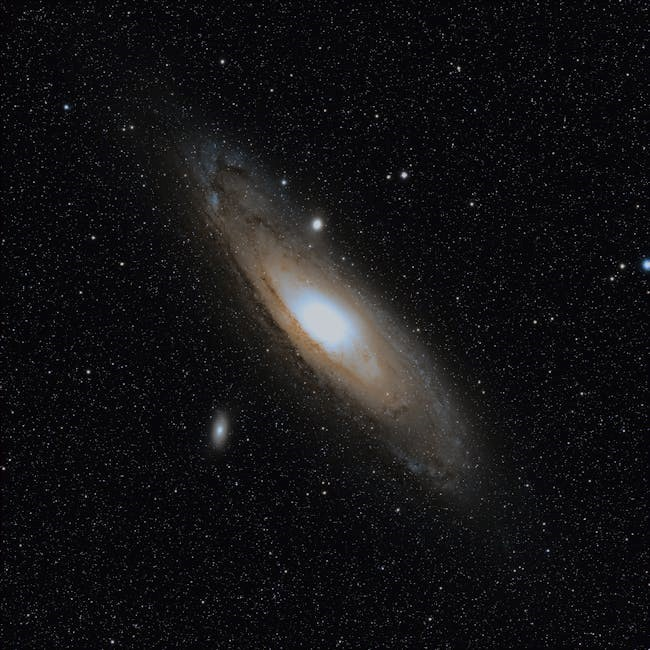The laws of the universe represent fundamental principles governing reality, from physical constants to spiritual truths. Rooted in ancient wisdom and modern science, they guide human understanding of existence, bridging the gap between cosmic mechanics and spiritual harmony, offering insights into the workings of the cosmos and life itself.
1.1 Definition and Scope
The laws of the universe encompass both physical and metaphysical principles that govern existence. They include fundamental constants like the speed of light and gravitational force, as well as spiritual truths such as the Law of Attraction and Karma. These laws operate universally, shaping the behavior of matter, energy, and consciousness. Their scope extends from cosmic phenomena to human experiences, providing a framework for understanding the interconnectedness of all things.
1.2 Historical Background
The concept of universal laws dates back to ancient philosophers and scientists like Galileo and Copernicus, who challenged geocentric views. These pioneers laid the groundwork for understanding cosmic principles. Over centuries, thinkers have explored both physical and metaphysical laws, blending science with spirituality. Historical texts and modern research reveal an evolving understanding of these principles, shaping humanity’s perception of the universe and its underlying order.
1.3 Importance in Modern Science
The laws of the universe are cornerstone principles in modern science, governing phenomena from cosmic expansion to quantum mechanics. They provide a framework for understanding the universe’s structure and evolution. By studying these laws, scientists uncover the underlying order of reality, enabling advancements in technology and theoretical discoveries. These principles remain essential for exploring the cosmos and unraveling its mysteries, bridging the gap between observation and comprehension.

Fundamental Constants of the Universe
Fundamental constants, like the speed of light and gravitational constant, govern the universe’s physical interactions. They are essential for understanding its structure, evolution, and underlying order.
2.1 The Speed of Light
The speed of light is a fundamental constant, approximately 299,792,458 m/s, representing the maximum speed in the universe. It is a cornerstone of modern physics, featured prominently in Einstein’s theory of relativity. This constant ensures the universality of physical laws, governing electromagnetic waves and spacetime interactions. Its constancy across all inertial frames underscores its pivotal role in understanding the cosmos and the unification of space and time in relativity.
2.2 Gravitational Constant
The gravitational constant, denoted as G, measures the strength of gravitational interaction, approximately 6.674×10^-11 N·m²/kg². It is central to Newton’s law of universal gravitation and Einstein’s General Relativity, influencing planetary orbits and galaxy formation. G’s precise value is crucial for understanding cosmic phenomena, from the expansion of the universe to the behavior of black holes, making it a cornerstone in astrophysics and cosmology.
2.3 Planck Constant
The Planck constant, denoted as ( h ), is a fundamental physical constant in quantum mechanics, approximately ( 6.626 imes 10^{-34} , ext{J·s} ). It relates energy to frequency and is central to understanding the quantized nature of light and matter. Discovered by Max Planck, it laid the foundation for quantum theory, explaining phenomena like blackbody radiation and the structure of atoms. Its significance extends to modern physics, shaping our understanding of the universe’s fundamental laws and quantum interactions.

The 12 Universal Laws
The 12 Universal Laws are timeless principles governing reality, from the Law of Attraction to the Law of Gender. They guide human behavior, cosmic order, and spiritual growth, offering a framework for understanding life’s mysteries and achieving harmony with the universe.
3.1 The Law of Divine Oneness
The Law of Divine Oneness states that everything in the universe is interconnected and part of a single, unified whole. This principle emphasizes that all beings, energies, and entities are linked, forming a harmonious system; It teaches that separation is an illusion, and true understanding comes from recognizing unity. By embracing this law, individuals can align with the universe’s flow, fostering compassion, cooperation, and spiritual growth. It is the foundation of all universal laws, guiding humanity toward oneness and harmony.
3.2 The Law of Vibration
The Law of Vibration states that everything in the universe vibrates at specific frequencies, from subatomic particles to human thoughts. This principle underscores that energy is dynamic and interconnected. By aligning personal vibrations with desired outcomes, individuals can influence their reality. It emphasizes the power of consciousness and the importance of harmony in manifesting life experiences, bridging the gap between the physical and spiritual realms.
3.3 The Law of Correspondence
The Law of Correspondence, often stated as “as above, so below; as within, so without,” reflects the universal principle of harmony and interconnectedness. It suggests that patterns and structures repeat across all levels of existence, from the macrocosm to the microcosm. This law emphasizes the unity of all things, encouraging individuals to align their inner world with the outer world to achieve balance and understanding in life and the universe.
3.4 The Law of Attraction
The Law of Attraction states that like energies attract similar energies, shaping reality through thoughts and emotions. By focusing on positive vibrations, individuals draw favorable experiences into their lives. This principle emphasizes the power of mindset and intention, encouraging alignment with universal forces to manifest desires. It teaches that consciousness influences outcomes, making it a powerful tool for personal growth and creating harmony with the universe’s natural flow.
3.5 The Law of Inspired Action
The Law of Inspired Action emphasizes taking purposeful steps aligned with divine will. It teaches that meaningful actions, guided by intuition and passion, lead to desired outcomes. Unlike forced efforts, inspired actions resonate with universal harmony, ensuring success and fulfillment. This law encourages trust in inner guidance, fostering a balance between effort and surrender, and aligns individuals with their higher purpose, making their contributions impactful and meaningful in the grand scheme of existence.
3.6 The Law of Perpetual Transmutation
The Law of Perpetual Transmutation states that everything in the universe is in a constant state of change and evolution. Energy transforms from one form to another, and matter cycles through creation and destruction. This law underscores the dynamic nature of existence, where nothing remains static. It teaches that growth and transformation are inevitable, guiding individuals to embrace change and align with the ever-evolving flow of the cosmos, fostering adaptation and renewal on all levels of being.
3.7 The Law of Cause and Effect
The Law of Cause and Effect states that every action, thought, or event triggers a corresponding reaction or consequence. This universal principle emphasizes that nothing happens by chance; all phenomena are interconnected. It teaches responsibility and awareness, as every decision influences outcomes. By understanding this law, individuals can align their actions with desired results, fostering harmony and balance in their lives and the world around them, while acknowledging the ripple effects of their choices.
3;8 The Law of Compensation
The Law of Compensation reflects the universe’s balance, ensuring that giving and receiving are equal. It emphasizes fairness and justice, rewarding positive actions and addressing negative ones. This law encourages generosity and warns against greed, promoting harmony and ethical behavior. By understanding it, individuals align with universal fairness, fostering a balanced and just existence.
3.9 The Law of Polarity
The Law of Polarity states that everything in the universe exists on a spectrum of opposites, such as good and evil, light and dark, or masculine and feminine. This duality is essential for balance and growth, allowing individuals to understand and appreciate contrasting energies. By embracing polarity, one can harmonize opposing forces, fostering equilibrium and wisdom in life’s journey.

3.10 The Law of Rhythm
The Law of Rhythm states that everything in the universe moves in cycles and patterns, from the seasons to human experiences. It teaches that life is a series of ebbs and flows, where every high is followed by a low and vice versa. Understanding this law helps individuals align with natural cycles, fostering balance and harmony. By embracing rhythm, one can navigate life’s challenges with grace and wisdom, recognizing the inevitability of change and renewal.
3.11 The Law of Relativity
The Law of Relativity, rooted in Einstein’s theory, explains that time, space, and gravity are interconnected and relative. It reveals that perception varies based on the observer’s frame of reference. This law challenges absolute truths, emphasizing flexibility in understanding the universe. By grasping relativity, individuals can embrace the fluidity of life, recognizing that all experiences are subjective and context-dependent, fostering a deeper appreciation for the universe’s dynamic nature and humanity’s place within it.
3.12 The Law of Gender
The Law of Gender reflects the duality of masculine and feminine energies present in all aspects of the universe. It emphasizes the balance and harmony needed between opposing forces to achieve creation and progress. This principle applies to physical, mental, and spiritual realms, teaching that both energies must align for fulfillment. Understanding this law fosters personal growth and empowers individuals to embrace the complementary nature of existence, leading to greater harmony in life and the universe.

Cosmic and Spiritual Laws
Cosmic and spiritual laws govern the harmony and balance of the universe, reflecting divine principles that guide existence. They encompass the interplay of energies, fostering growth and unity, ensuring equilibrium in all realms, from physical to spiritual, and promoting the evolution of consciousness and the cosmos alike, revealing the deeper purpose of creation and life.
4.1 The Law of Balance
The Law of Balance is a universal principle ensuring equilibrium in all aspects of existence. It maintains harmony between opposing forces, such as light and dark, masculine and feminine, and creation and destruction. This law governs the cosmos, ensuring stability and order. It teaches that true power lies in balancing energies, fostering growth and preventing extremes. By aligning with this law, individuals achieve harmony in their lives, reflecting the universe’s inherent equilibrium and promoting holistic well-being.
4.2 The Law of Karma
The Law of Karma is a universal principle of moral causation, where every action, thought, and intention generates consequences. It emphasizes that energy returned equals the energy sent out, teaching responsibility and ethical behavior. Rooted in ancient philosophies, karma guides individuals toward spiritual growth by aligning their actions with justice, compassion, and harmony. This law ensures that balance is maintained, fostering personal and collective evolution through the cycles of cause and effect.
4.3 The Law of Grace
The Law of Grace is a divine principle of universal balance, reflecting the unconditional love and mercy of the cosmos. It operates beyond human understanding, offering forgiveness and harmony. Grace restores equilibrium, often intervening when karma alone cannot resolve a situation. This law embodies the universe’s inherent benevolence, ensuring that every being has the opportunity to align with divine will and experience redemption, fostering spiritual growth and universal harmony through its infinite compassion.
The Big Bang and the Expanding Universe
The Big Bang theory explains the universe’s origin as a cosmic explosion, initiating expansion. This event shaped the universe’s structure, governed by fundamental laws, revealing its evolution and destiny through continuous cosmic expansion and the emergence of stars, galaxies, and life, aligning with universal principles that dictate its ever-changing nature and ultimate fate.
5.1 The Big Bang Theory
The Big Bang Theory proposes that the universe originated from a single, infinitely hot and dense point, expanding rapidly around 13.8 billion years ago. This cosmic explosion marked the beginning of space, time, and matter, with fundamental laws emerging to govern the evolving cosmos. The theory explains the universe’s homogeneity, the cosmic microwave background radiation, and the abundance of light elements, forming the foundation of modern cosmology and our understanding of universal laws and structure.
5.2 Cosmic Expansion
Cosmic expansion refers to the universe’s continuous enlargement, first observed through redshift in galaxy spectra. Dark energy drives this acceleration, shaping the universe’s fate. The Big Bang initiated expansion, with matter dispersing uniformly. Some theories suggest an oscillating universe, expanding and contracting cyclically. This phenomenon influences universal laws, as physical constants may evolve with cosmic growth, offering insights into the universe’s origins and ultimate destiny, governed by dynamic, ever-changing principles of cosmic evolution and energy distribution.
5.3 Implications for Universal Laws
Cosmic expansion significantly influences universal laws, as the universe’s growth impacts physical constants and principles. Dark energy’s role in acceleration suggests evolving laws, potentially altering fundamental forces. The oscillating universe theory implies cyclical resets, reshaping reality. These dynamics challenge static views of universal laws, highlighting their adaptability. While expansion introduces uncertainty, it also reveals the resilience of underlying principles, ensuring harmony amidst cosmic evolution and energy distribution, guiding the universe’s enduring balance and order.
Dark Matter and Dark Energy
Dark matter and dark energy are mysterious components shaping the universe’s structure and expansion. They influence gravitational forces and cosmic dynamics, impacting universal laws and energy distribution.
6.1 Understanding Dark Matter

Dark matter is a mysterious, invisible component making up most of the universe’s mass. It doesn’t emit light but exerts gravitational influence, shaping galaxies and cosmic structures. Unlike normal matter, it doesn’t interact electromagnetically, making it undetectable through conventional means. Scientists infer its existence through its gravitational effects on visible matter and the large-scale structure of the universe. Its nature remains unknown, but theories suggest it could be composed of exotic particles like WIMPs or axions.

6.2 The Role of Dark Energy

Dark energy is a mysterious force driving the universe’s accelerated expansion. Discovered in the late 1990s, it accounts for approximately 68% of the universe’s total energy density. Unlike gravity, dark energy pushes matter apart, counteracting the attractive forces. Its nature remains unknown, but theories suggest it could be a property of space itself or a sign of new physics. Understanding dark energy is crucial for unraveling the universe’s fate and the balance of cosmic forces.
6.3 Impact on Universal Laws
Dark matter and dark energy challenge our understanding of universal laws, particularly gravity and cosmic expansion. These mysterious entities influence galaxy formation and the universe’s accelerating growth, prompting revisions to existing theories. Their presence suggests new physical laws or modifications to relativity, reshaping our comprehension of space, time, and matter. Understanding their roles is essential for refining universal laws and unlocking the cosmos’s deepest secrets, blending physics with the unknown.

Quantum Mechanics and the Universe
Quantum mechanics explores the universe’s fundamental nature through principles like wave-particle duality, challenging classical physics and offering new insights into universal laws and reality’s fabric.
7.1 Quantum Principles
Quantum principles, such as superposition and entanglement, reveal the universe’s intricate nature. These phenomena challenge classical physics, introducing probabilistic realities and non-local connections. They form the basis of modern physics, explaining how particles behave at microscopic scales and influencing our understanding of universal laws. By studying these principles, scientists uncover the hidden mechanisms governing reality, bridging the gap between the quantum world and the cosmos.
7.2 Wave-Particle Duality
Wave-particle duality is a cornerstone of quantum mechanics, revealing that particles like electrons exhibit both wave-like and particle-like properties. This concept, demonstrated through experiments such as the double-slit experiment, challenges classical notions of reality. It illustrates the probabilistic nature of quantum entities, where particles can exist in multiple states simultaneously. This duality fundamentally reshapes our understanding of the universe, blending the discrete and continuous into a unified framework of existence.
7.3 Implications for Universal Laws
Quantum mechanics, particularly wave-particle duality, profoundly influences our understanding of universal laws. It suggests that reality is not fixed but exists in a state of probability, challenging classical determinism. This principle aligns with the Law of Vibration and Correspondence, implying that all aspects of the universe are interconnected and interdependent. Such insights redefine how we perceive the harmony between physical and metaphysical realms, offering a deeper understanding of the cosmos and its governing principles.
The Role of Gravity
Gravity is a fundamental force shaping the universe, influencing planetary orbits, and governing cosmic structures. It connects Newton’s law and Einstein’s relativity to universal harmony.
8.1 Newton’s Law of Gravity
Newton’s Law of Gravity, formulated by Sir Isaac Newton, describes the gravitational force between two masses. It states that every point mass attracts every other point mass with a force proportional to the product of their masses and inversely proportional to the square of the distance between them. This law, expressed as F = G(m1m2)/r², where G is the gravitational constant, revolutionized physics and astronomy. It explains planetary motion and the structure of the universe, forming a cornerstone of classical mechanics and our understanding of universal laws.
8.2 Einstein’s General Relativity
Albert Einstein’s General Relativity revolutionized our understanding of gravity, describing it as the curvature of spacetime caused by mass and energy. Published in 1915, the theory introduced concepts like gravitational waves and the equivalence principle. It predicted phenomena such as black holes and the bending of light, providing a framework that explains the large-scale structure of the universe. General Relativity builds on Newton’s law but offers a more comprehensive and accurate description of gravity’s role in cosmic dynamics and universal laws.
8.3 Gravity’s Role in Universal Laws
Gravity is a fundamental force unifying celestial and terrestrial phenomena, shaping the structure of galaxies, stars, and planetary systems. It governs the motion of objects, from falling apples to orbiting planets, embodying universal laws. Gravity’s influence extends beyond physics, reflecting in spiritual principles like attraction and balance. Understanding gravity illuminates the interconnectedness of all things, revealing the universe’s harmonic design and the deeper truths embedded in its operational laws.

The Concept of Time and Space
Time and space are intertwined as dimensions of the universe, governed by relativity and cosmic laws. They shape existence, from human perception to celestial mechanics, universally.
9.1 Time Dilation
Time dilation, a concept rooted in Einstein’s relativity, explains how time varies depending on gravity and velocity. Stronger gravitational fields or higher speeds slow time relative to outside observers. This phenomenon, supported by cosmic laws, highlights the universe’s flexible fabric of spacetime, where time isn’t absolute but dependent on context. Understanding time dilation deepens insights into the universe’s workings and the interplay of its fundamental laws.
9.2 Space-Time Continuum
The space-time continuum, a cornerstone of Einstein’s General Relativity, describes the universe as a unified, flexible fabric where space and time are inseparable. Mass and energy warp this fabric, creating gravitational fields. This concept revolutionized physics, showing that spacetime isn’t passive but actively shapes cosmic events. It embodies the universe’s laws, illustrating how matter, energy, and gravity interplay to form reality, challenging classical notions of space and time as separate entities.
9.3 Relativity and Universal Laws
Einstein’s General Relativity revealed that spacetime is intertwined with matter and energy, shaping the universe’s structure. This theory unifies space, time, and gravity, illustrating how universal laws govern cosmic behavior. Relativity shows that time dilation and gravitational effects are intrinsic to spacetime’s flexibility. These principles deepen our understanding of the universe’s functioning, linking physical phenomena to the broader framework of universal laws that dictate reality’s fabric and evolution.
The Universe’s Potential for Life
The universe’s potential for life is explored through theories like the Drake Equation and the Fermi Paradox, questioning the existence of intelligent civilizations and their implications for universal laws.
10.1 The Drake Equation
The Drake Equation estimates the number of intelligent civilizations in the galaxy by considering factors like star formation rates, habitable planets, and the development of communicative life. This mathematical framework, proposed by Frank Drake, sparks curiosity about extraterrestrial life and encourages deeper exploration of cosmic laws and humanity’s place within the universe’s grand design.
10.2 The Fermi Paradox
The Fermi Paradox highlights the contradiction between the high probability of extraterrestrial life and the lack of observable evidence. This puzzle, named after physicist Enrico Fermi, questions why advanced civilizations have not contacted Earth. It challenges our understanding of the universe’s potential for life and raises questions about humanity’s uniqueness, the “Great Filter,” and the implications for universal laws governing cosmic evolution and intelligent existence.
10.3 Implications for Life and Laws
The existence of life beyond Earth challenges and expands our understanding of universal laws. If life is widespread, it suggests cosmic principles like the Law of Attraction and divine oneness operate universally. Conversely, the absence of detectable life raises questions about the uniqueness of Earth’s conditions. These implications redefine humanity’s role within the grand scheme, emphasizing the interconnectedness of all existence and the potential for life to thrive under universal governance.





